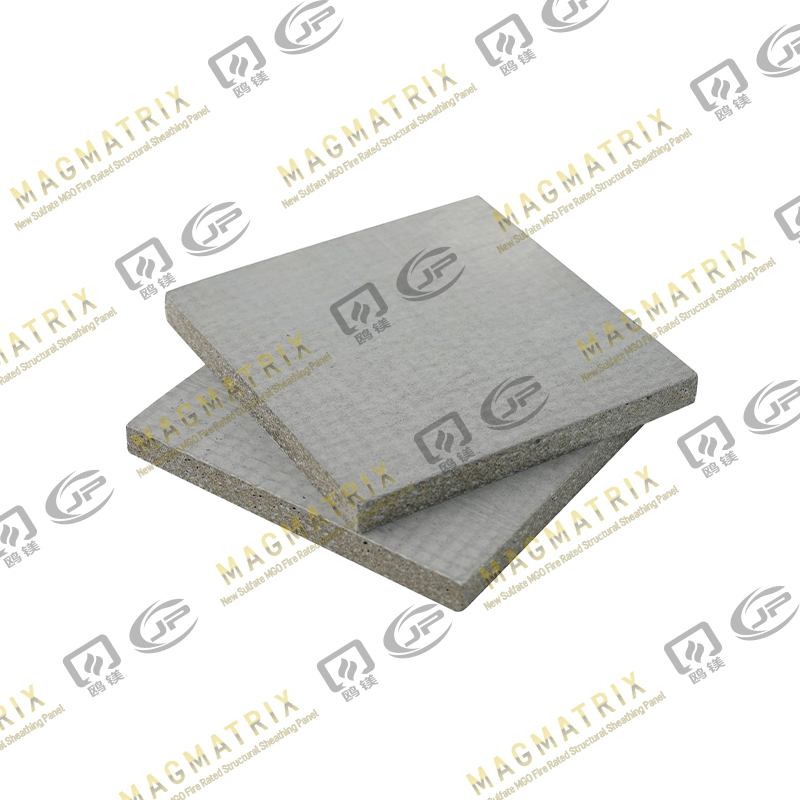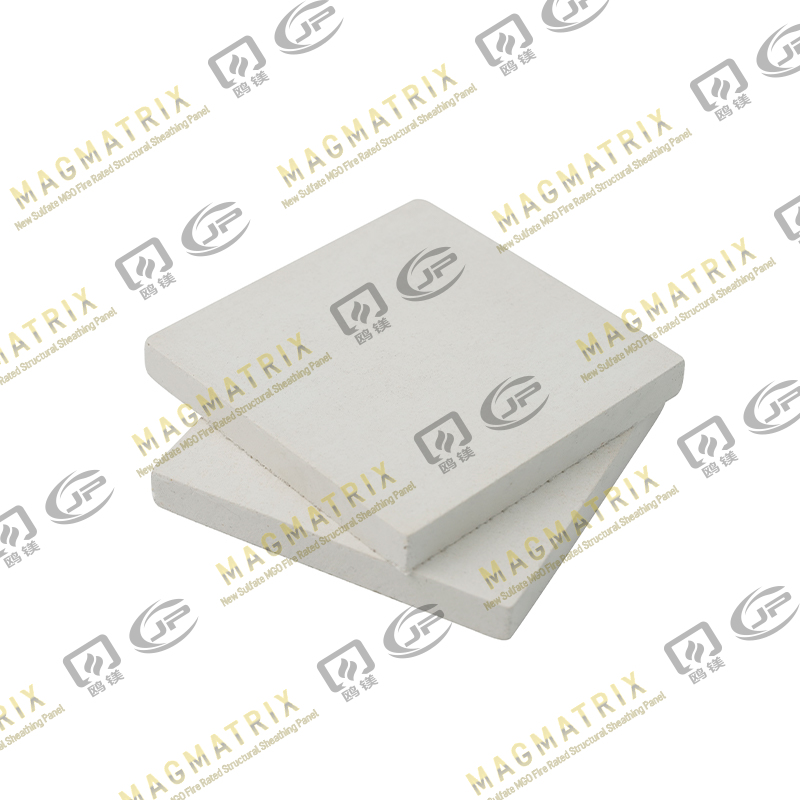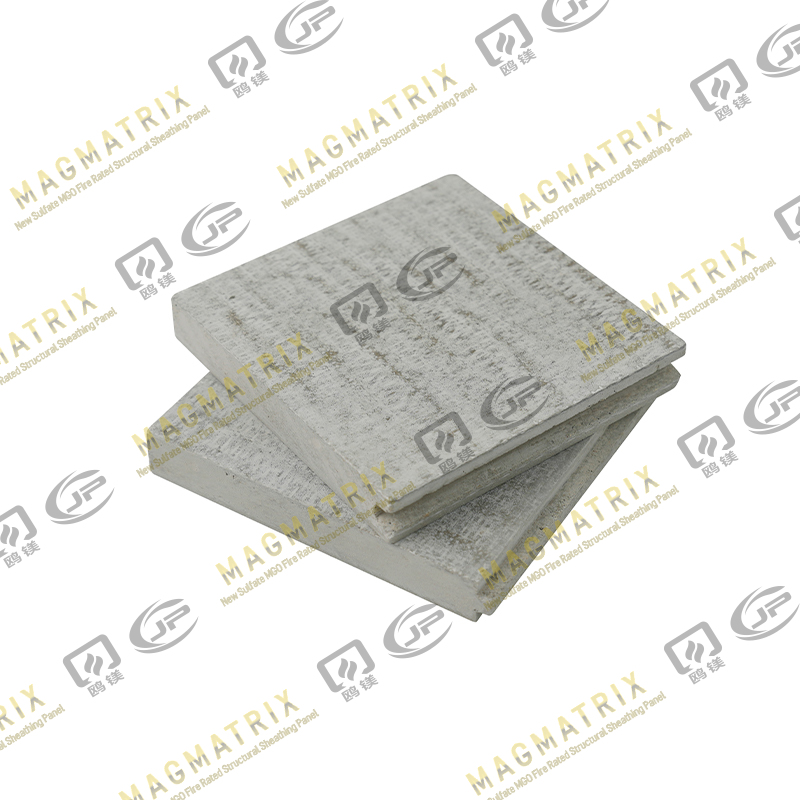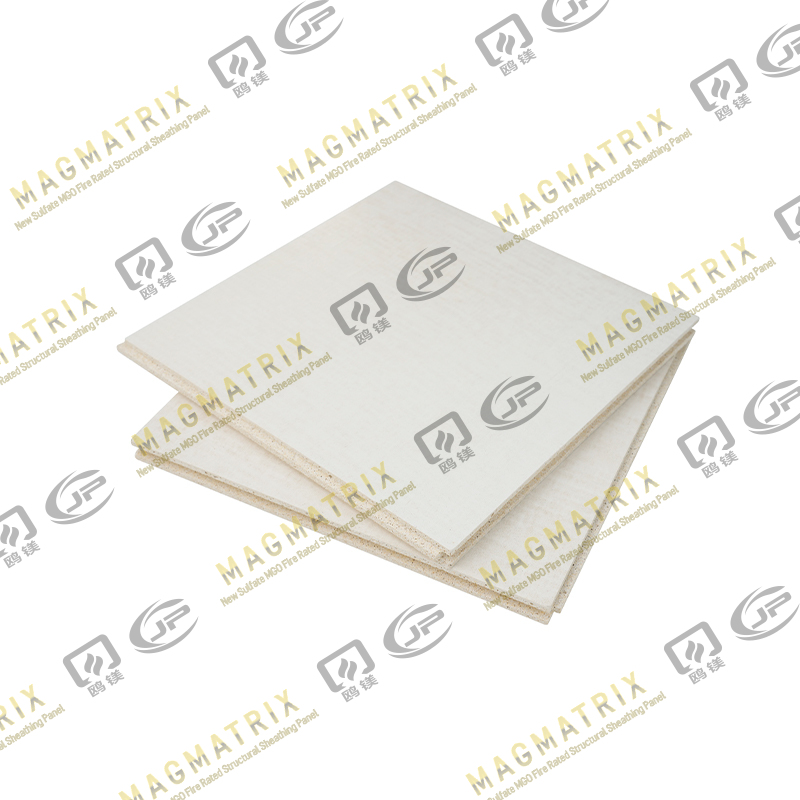Magnesium oxide (MgO) subfloor sheathing boards have gained significant recognition in modern construction for their durability, fire resistance, and environmental performance. Yet, one of the most critical questions from builders, architects, and engineers alike is: How does MgO Subfloor Sheathing Board perform under temperature fluctuations?
Temperature changes are inevitable in most environments, whether from seasonal shifts, direct sun exposure, or internal heating and cooling systems. Understanding how MgO subfloor boards respond to these fluctuations is essential to ensure the structural stability and longevity of any building project.
Before assessing their thermal behavior, it’s important to understand what MgO Subfloor Sheathing Boards are composed of. These boards are manufactured from magnesium oxide, an inorganic material derived from magnesium-rich minerals. MgO is mixed with other additives and reinforced with mesh (commonly fiberglass) to form a rigid, dimensionally stable board.
Unlike conventional subfloor materials such as plywood or oriented strand board (OSB), MgO boards are non-combustible, moisture-resistant, and do not warp easily under environmental stress. These properties make them a compelling choice for both interior and exterior subfloor applications.
2. The Role of Temperature in Building Materials
Temperature plays a major role in determining the lifespan and stability of building components. When temperatures rise, most materials expand; when they fall, materials contract. Repeated thermal cycling—known as thermal fatigue—can cause cracks, distortions, or delamination over time.
Organic materials like wood and plywood are particularly prone to expansion and shrinkage because they absorb moisture and react strongly to temperature changes. Cement boards also expand and contract but at slower rates due to their mineral composition. MgO boards, being mineral-based and chemically stable, perform even better under these conditions.
3. Thermal Stability of MgO Subfloor Sheathing Board
3.1 Low Thermal Expansion Coefficient
One of the most advantageous properties of MgO Subfloor Sheathing Board is its low coefficient of thermal expansion (CTE). This means the board experiences minimal dimensional changes even when subjected to large temperature variations.
In real-world terms, this stability prevents issues like:
- Floor squeaking due to board movement
- Cracks at joints or edges
- Separation from fasteners or adhesives
This characteristic is particularly valuable in regions that experience wide temperature swings, such as desert climates or cold continental zones.
3.2 Resistance to Warping and Distortion
Unlike wood-based materials that may warp, twist, or buckle as temperatures fluctuate, MgO Subfloor Sheathing Boards retain their shape. Their crystalline structure and inorganic composition provide dimensional integrity across a broad temperature range.
Testing conducted by several manufacturers demonstrates that even when exposed to temperature extremes—from freezing conditions to over 100°C—MgO boards maintain flatness and structural rigidity.
4. Thermal Conductivity and Heat Transfer
4.1 Conductive yet Insulative Balance
MgO Subfloor Sheathing Boards have moderate thermal conductivity. They are conductive enough to allow even heat transfer across the floor surface—useful for underfloor heating systems—yet they do not rapidly lose or gain heat like metals or dense concrete.
This balance means that rooms with MgO subfloors tend to maintain more consistent temperatures, reducing energy loss and improving thermal comfort.
4.2 Suitability for Heated Floors
Because of their stability and fire resistance, MgO boards are often chosen as a substrate in radiant floor heating installations. They do not emit volatile compounds when heated and are compatible with both electric and hydronic heating systems.
Unlike gypsum-based boards, which can degrade over time under repeated heating cycles, MgO boards maintain their structural and mechanical integrity, ensuring a longer service life for the floor system.
5. Behavior Under Repeated Thermal Cycling
5.1 Resistance to Microcracking
Repeated cycles of heating and cooling can cause microcracks in certain composite materials. MgO Subfloor Sheathing Boards, however, show remarkable resistance to this issue due to their homogeneous and crystalline microstructure.
Laboratory testing often subjects MgO boards to cycles between -20°C and +70°C. After multiple cycles, the boards typically exhibit no visible surface cracking, delamination, or loss of mechanical strength.
5.2 Bond Retention with Adhesives and Coatings
Many subfloor systems rely on adhesives, coatings, or leveling compounds. Thermal cycling can stress these bonds if the substrate expands and contracts excessively. MgO’s low thermal movement minimizes shear stress at the adhesive interface, maintaining strong adhesion between layers and preventing premature failure.

6. Comparative Thermal Performance with Other Subfloor Materials
| Property |
MgO Subfloor Sheathing Board |
Plywood |
Cement Board |
OSB |
| Thermal Expansion |
Very Low |
High |
Moderate |
High |
| Dimensional Stability |
Excellent |
Moderate |
Good |
Moderate |
| Resistance to Warping |
Excellent |
Poor |
Good |
Poor |
| Compatibility with Heating Systems |
Excellent |
Limited |
Good |
Limited |
| Fire Resistance |
Excellent |
Poor |
Good |
Poor |
From this comparison, it’s evident that MgO Subfloor Sheathing Board outperforms traditional materials in nearly every thermal-related category, especially where stability and consistency are paramount.
7. Environmental Exposure and Performance
7.1 Sunlight and Surface Temperature
On exterior decks or exposed subfloors, direct sunlight can cause large temperature gradients. MgO boards resist UV-induced degradation and do not soften or discolor under prolonged exposure.
Even when the surface temperature rises significantly, the internal structure remains intact, making MgO boards ideal for semi-exposed or ventilated flooring systems.
7.2 Combined Temperature and Moisture Resistance
Temperature fluctuations often occur alongside changes in humidity. Many materials expand due to moisture absorption when temperatures rise. MgO Subfloor Sheathing Boards are highly moisture-resistant, which minimizes swelling or contraction related to humidity.
This dual resistance—thermal and moisture—ensures consistent performance even in coastal, tropical, or high-altitude regions where both variables fluctuate dramatically.
8. Installation Considerations for Temperature Performance
Proper installation enhances the board’s ability to handle thermal fluctuations. Here are several best practices:
8.1 Acclimatization
Before installation, MgO boards should be acclimated to the site’s temperature and humidity for at least 24–48 hours. This ensures that any minor environmental adjustment occurs before fastening.
8.2 Allowing for Expansion Gaps
Although MgO boards have low thermal movement, leaving small expansion gaps (typically 2–3 mm) between boards is recommended. These gaps accommodate minimal movement without causing stress on the fasteners or joints.
8.3 Correct Fastening Techniques
Use corrosion-resistant screws or nails, spaced according to manufacturer specifications. Secure fastening helps prevent uplift or movement caused by uneven thermal loads.
8.4 Compatible Sealants and Adhesives
When using adhesives or sealants, select products that are chemically compatible with MgO and maintain flexibility under temperature cycling. Silicone- or polyurethane-based products typically perform best.
8.5 Ventilation and Thermal Equalization
For subfloors installed above crawl spaces or insulated cavities, ensure proper ventilation. Even temperature distribution across the floor assembly minimizes localized stress points and enhances overall performance.
9. Long-Term Durability and Thermal Aging
Over extended service life, repeated exposure to temperature extremes can degrade certain materials through a process called thermal aging. MgO Subfloor Sheathing Boards exhibit minimal thermal aging due to their chemical stability and non-organic composition.
In fact, unlike wood or polymer-based panels that may lose tensile strength or flexibility over time, MgO boards retain most of their mechanical properties even after years of exposure to high or fluctuating temperatures.
This longevity reduces maintenance needs and replacement costs—factors that contribute to sustainable building design.
10. Real-World Applications
10.1 Cold Climate Construction
In regions with freezing winters, MgO Subfloor Sheathing Boards maintain dimensional integrity without cracking or delaminating. Their resistance to frost damage and thermal shock makes them suitable for cabins, basements, and commercial floors in cold climates.
10.2 High-Temperature Zones
In hot, arid environments where surfaces can reach 60°C or higher, MgO boards prevent warping and expansion-related joint failure. Their low heat retention also prevents the floor from becoming uncomfortably warm.
10.3 Mixed-Climate and Coastal Areas
For projects that experience both temperature and humidity fluctuations—such as coastal housing—MgO boards provide a stable, corrosion-free, and mold-resistant foundation. The combination of thermal and moisture resilience ensures lasting performance.
11. Sustainable Advantages Under Thermal Stress
The ability of MgO Subfloor Sheathing Boards to withstand temperature fluctuations contributes directly to sustainability. Fewer material failures mean fewer replacements and repairs, reducing waste. Additionally, their stable performance improves the energy efficiency of interior environments by maintaining consistent thermal conditions.
Since MgO boards are also non-toxic and often produced with minimal environmental impact, they align well with modern green building standards such as LEED or BREEAM.
12. Conclusion: Reliable Under Any Climate
MgO Subfloor Sheathing Boards exhibit exceptional performance under temperature fluctuations, combining dimensional stability, low thermal expansion, moisture resistance, and long-term durability. They endure both heat and cold with minimal deformation, ensuring consistent structural performance throughout the life of a building.
For architects and builders seeking a resilient, fire-safe, and environmentally stable subfloor solution, MgO boards stand as one of the most reliable materials available today. Their capacity to resist thermal stress not only enhances building longevity but also contributes to more sustainable and energy-efficient construction practices.
In short, whether used in freezing winters, blazing summers, or anything in between, MgO Subfloor Sheathing Board remains steadfast—proving that intelligent material engineering can overcome even the harshest of temperature challenges.
 BMSC 517 New Sulfate MgO Board
BMSC 517 New Sulfate MgO Board Multi-Support MgO Wall Sheathing Board
Multi-Support MgO Wall Sheathing Board Perseverance MgO Wall Sheathing Board
Perseverance MgO Wall Sheathing Board Multi-Support MgO Subfloor Sheathing Board
Multi-Support MgO Subfloor Sheathing Board Perseverance MgO Subfloor Sheathing Board
Perseverance MgO Subfloor Sheathing Board MagMatrix MgO Underlayment Panel/board
MagMatrix MgO Underlayment Panel/board


 English
English русский
русский Español
Español





